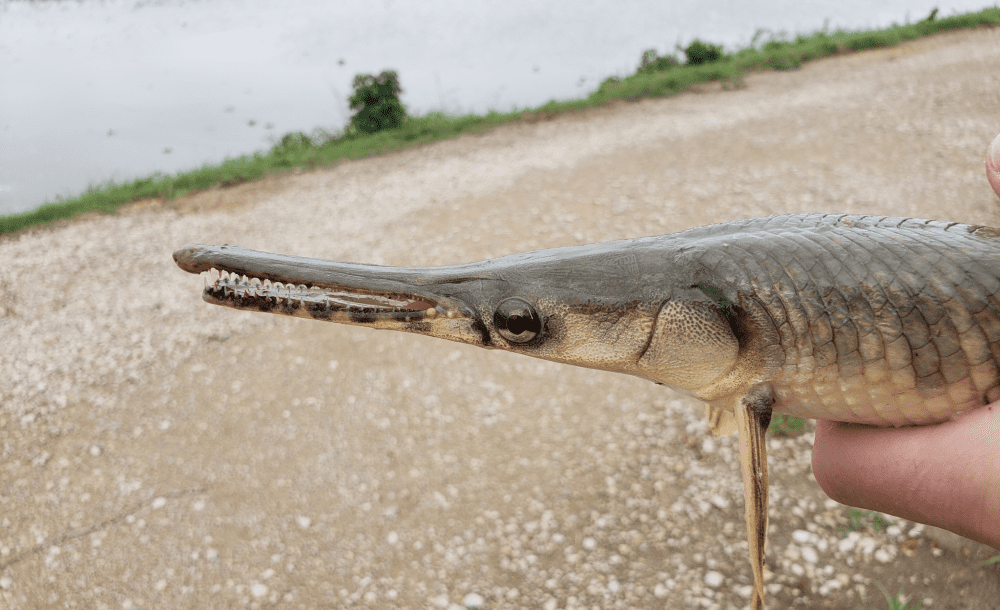With a long snout sporting sharp pointed teeth, portraits of the spotted gar (Lepisosteus oculatus) can look quite intimidating – but these fish are actually the smallest modern gars. While alligator gars can morph into behemoths over 2.5 meters (8 feet) long, the humble spotted gar stops at around the 90-centimeter (three-foot) mark.
Spotted gar like fresh, clean waters, and their appearance in a waterway can sometimes be a sign that the habitat is recovering from pollution. This was demonstrated in an electrofishery survey using a current to stun fish and sample them before returning them to the water, which found spotted gar in the Chicago Area Waterway System for the first time. Finding a wild specimen so far north could well be positive news for the water quality in the area.
Where do spotted gar live?
You can find spotted gar across a large stretch of the United States, from central Texas east into western Florida. Spotted gar have also wriggled their way up north through the Mississippi River into Illinois, Ohio River and Lake Erie, and evidently parts of Chicago.

How big do spotted gar get?
Spotted gar can grow up to 90 centimeters (3 feet) in length and weigh around 3.4 kilograms (8 pounds). Their elongated bodies are darker on top than on the bottom, with spots that help them to camouflage. They look slightly different as juveniles, sporting a bold stripe down their sides – research hasn’t yet been able to determine if it makes them go faster (have they tried flames instead?).
What do spotted gar eat
Spotted gar are carnivorous predatory fish and have the teeth to match, wielding a single row of sharp pointy villiform teeth. The combination of gnashers and long snouts enables them to impale their prey and reposition it so that it can be swallowed head-first.
The favorite prey of spotted gar include crayfish, fish, amphibians, and insects. When they’re juveniles they subsist mostly on insect larvae, but it’s not long before other fish are on the menu.
Why are spotted gar considered primitive fish?
Gars belong to Lepisosteidae, a group representing the only surviving members of the Ginglymodi, which is a group of ray-finned fish that contain gars and their extinct relatives. Those long-lost family members swam in Earth’s waterways when the dinosaurs were still alive, earning modern gars the status of primitive fishes.
Source Link: Primitive And Predatory Spotted Gar Date Back 100 Million Years